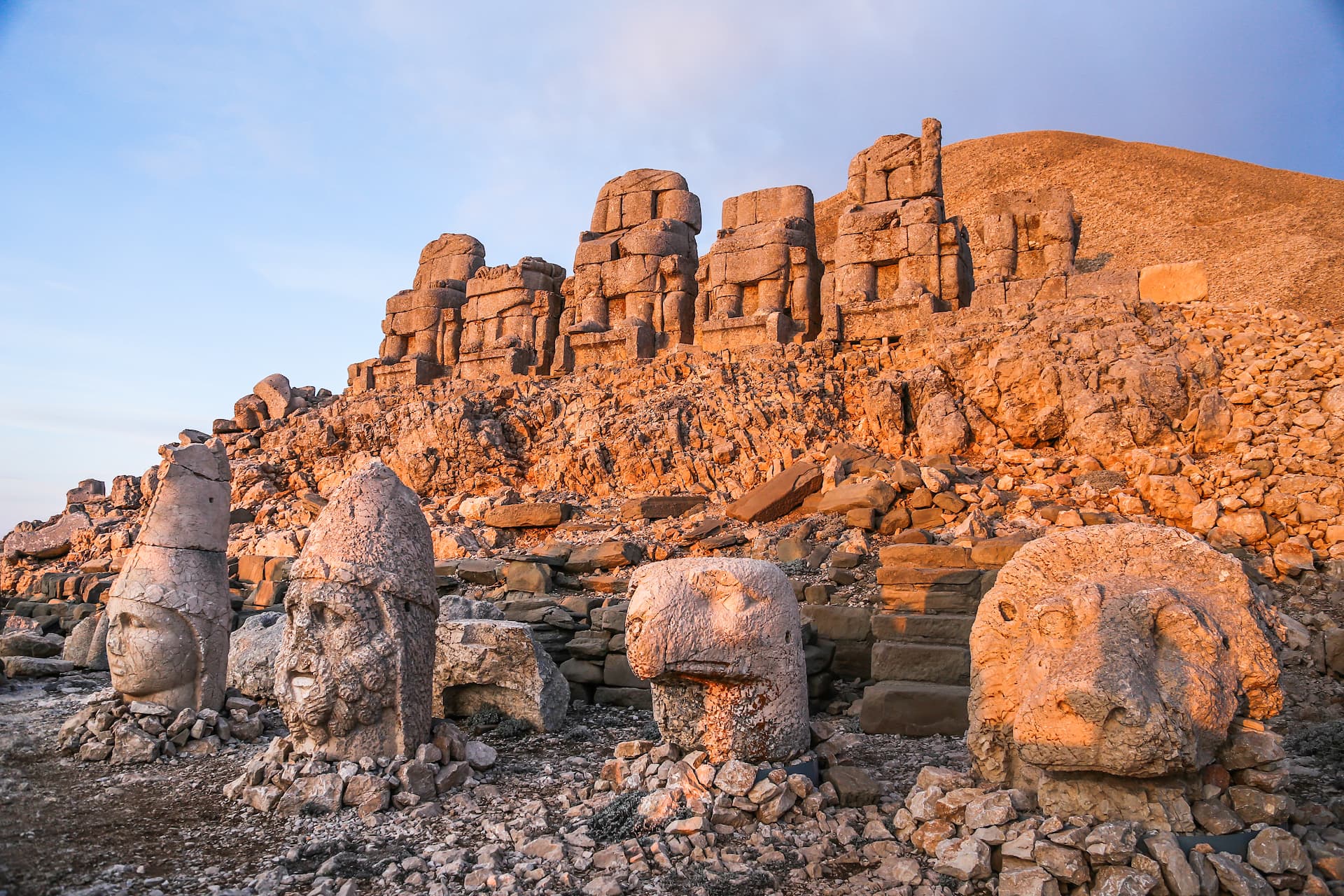
Eastern and Western Civilizations, 2150 m. Nemrut, the eighth wonder of the world, is in the UNESCO World Cultural Heritage with its fascinating statues reaching ten meters in height and inscriptions that are meters long.
Mount Nemrut attracts attention with its giant statues and mausoleum, as well as being the place where the world's most magnificent sunrise and sunset can be watched. Every year, thousands of people come to Mount Nemrut to watch the sunrise and sunset.
Declared as a World Cultural Heritage by UNESCO, Mount Nemrut is one of the important National Parks of the country, together with the artifacts of the Commagene Civilization around it. The giant statues and tumulus on Mount Nemrut, Arsameia (Old Castle), New Castle, Karakuş Hill and Cendere Bridge are located within the borders of the National Park.
For two thousand years, the sun has risen and set at 2150 m. In order to solve the mystery of the giant statues watching at height, it is necessary to go to the discovery of the Commagene Civilization.
The team headed by the young scientist Otto Punchtein, who was sent to the region by the Royal Academy of Mount Nemrut to do research, works on the tumulus on the top of Mount Nemrut and on the colossal sculptures and various reliefs on the terraces formed on the east and west sides of the tumulus. Punchstein, who deciphered the Greek inscription after long studies, discovered that these works belonged to the Commagene Civilization and were built by the Commagene King Antiochos I. The inscription, written by Antiochos, contains the secret of Mount Nemrut and the laws of Antiochos.
The excavations that led to the emergence of the Commagene Civilization were carried out in Arsameia, Samsat and the Euphrates Basin, apart from Mount Nemrut. The movable artifacts unearthed in the excavations in the region are preserved in museums, and the rest in the National Park Area.